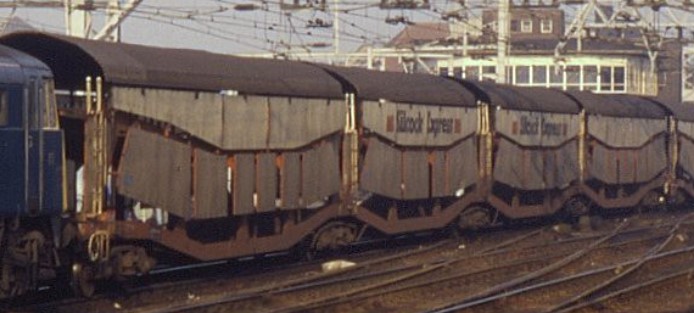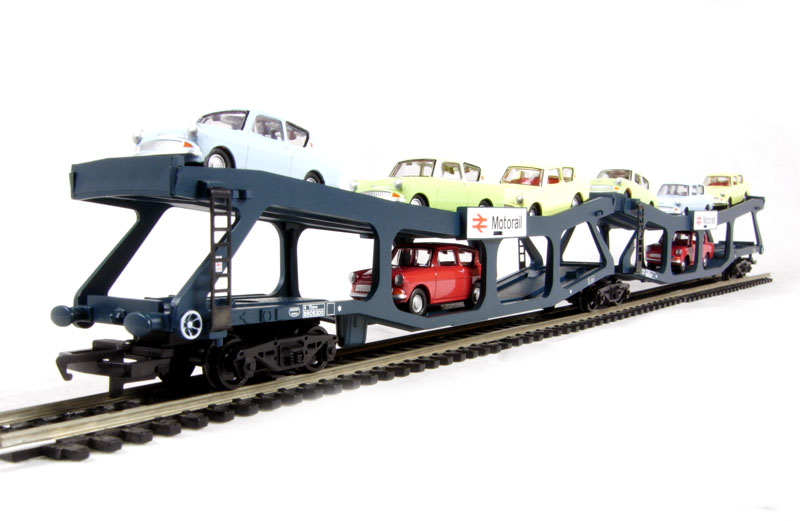Cartic-4 / PJA car carrier Profile and Models

Cartic wagons, with later side covers & roofs at Stratford in November 1988. ©Phil Richards
|
The fleet of double-decker Cartic-4 car carriers were built jointly between British Rail and Ford, following the Beeching Report of 1963. The report urged that British Rail focus on efficient block trains for freight and adpot fast, air-braked bogie wagons to replace ageing & slow 4-wheeled stock. The Cartic was revolutionary for its time, comprising a permanently coupled four-part vehicle in which the inner cars were linked via shared bogies on articulated joints. Each set could carry 34 (1960s sized) cars at speeds of up to 75 mph. The majority were built for private vehicle transporters MAT-Transauto, Tolemans and Silcock & Collings (later STVA UK), however some were built for BR for use on Motorail services from 1966. The Motorail network allowed passengers to take their car on holiday between cities including London, Birmingham, Sheffield, Scotland, the South West and North Wales. Over time, modifications were made to the wagons including the installation of side screens and roofs to protect vehicles from stone chips. The vehicles lasted in use until the early 2000s, when the final examples were converted to single-deck carriers for light commercial vehicles, before being scrapped in 2013. (Information provided via Revolution Trains) |
|
|
Type of Vehicle |
Articulated Car Carrier Wagon |
|
Builder |
BR Ashford Works Rootes Pressings Standard Wagon Works |
|
Build Dates |
1964 to 1972 |
|
Total Built |
538 |
|
Wheel Configuration |
Wagons are conjoined sets of four, with a standard bogie at one end and articulated bogie in-between each set |
|
Operated By |
British Rail Silcock & Collings MAT-Transauto STVA |
|
Main Duties |
Car Transport Motorail Services |
|
In Service Until |
2013 |
|
Surviving Examples |
0 |




 BR blue
BR blue
 Silcock & Collings
Silcock & Collings
 MAT-Transauto
MAT-Transauto
 STVA
STVA
